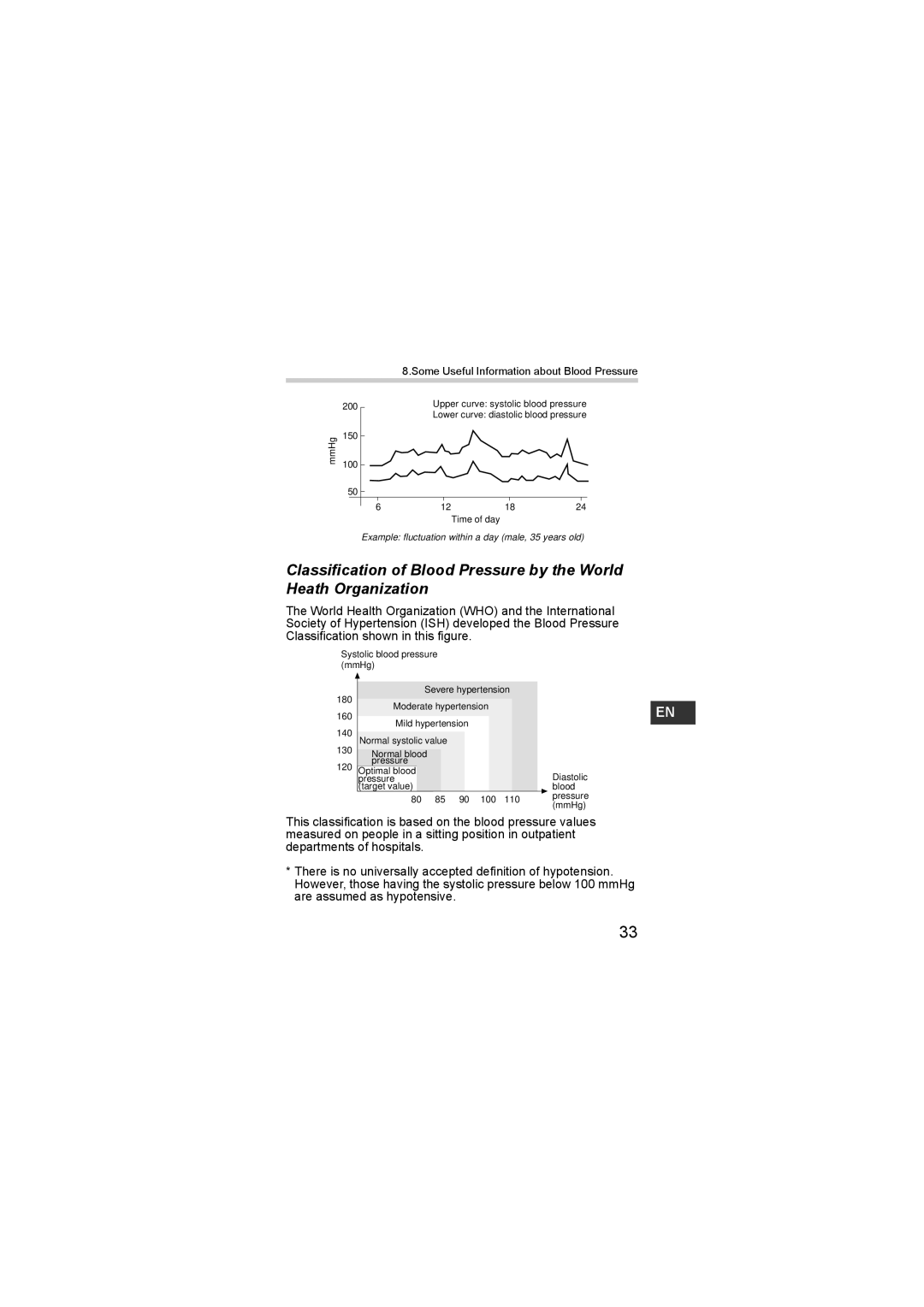R3-1 Plus specifications
The Omron R3-1 Plus is a sophisticated and versatile device designed to enhance the management of healthcare applications, particularly in the field of patient monitoring. This advanced monitor is engineered to provide accurate, uniform, and user-friendly performance, making it an excellent choice for a range of medical environments.One of the standout features of the Omron R3-1 Plus is its cutting-edge sensing technology, which allows for precise measurements and real-time data collection. The device serves as a vital tool for healthcare professionals, enabling them to track vital signs reliably and efficiently. Its capability to offer continuous monitoring means patients can be observed over extended periods, reducing the need for frequent check-ups.
The R3-1 Plus is equipped with an easy-to-read digital display, which ensures that vital readings are clear and straightforward for users. This feature significantly enhances usability and aids in swift decision-making during critical situations. Furthermore, its intuitive interface allows healthcare providers to navigate through its functions seamlessly, making training and implementation hassle-free.
Another critical aspect of the Omron R3-1 Plus is its compact and portable design. This feature ensures that the device can be utilized in various healthcare settings, including hospitals, clinics, and home care situations. The lightweight construction enables easy mobility, which is essential for emergency situations or for when patients need to be monitored on the go.
The device also incorporates advanced connectivity features, enabling integration with other healthcare management systems. This interoperability ensures that data can be shared promptly, facilitating coordinated care among different healthcare providers. Moreover, it contributes to comprehensive patient records, ultimately improving the overall quality of care.
In terms of durability, the Omron R3-1 Plus is built with robust materials that ensure longevity and reliability in demanding environments. It complies with rigorous standards, assuring medical professionals that it will perform consistently over time.
In conclusion, the Omron R3-1 Plus stands out for its advanced technology, user-friendly design, portability, and durable construction. It offers healthcare professionals the tools they need to monitor patients effectively, enhancing patient care and outcomes in a variety of clinical settings. As healthcare continues to evolve, devices like the Omron R3-1 Plus are pivotal in advancing patient monitoring and management practices.

